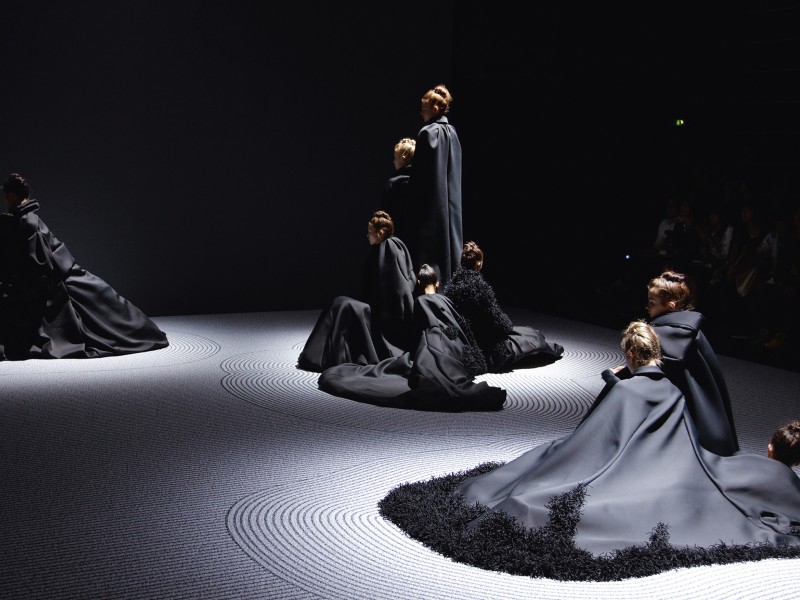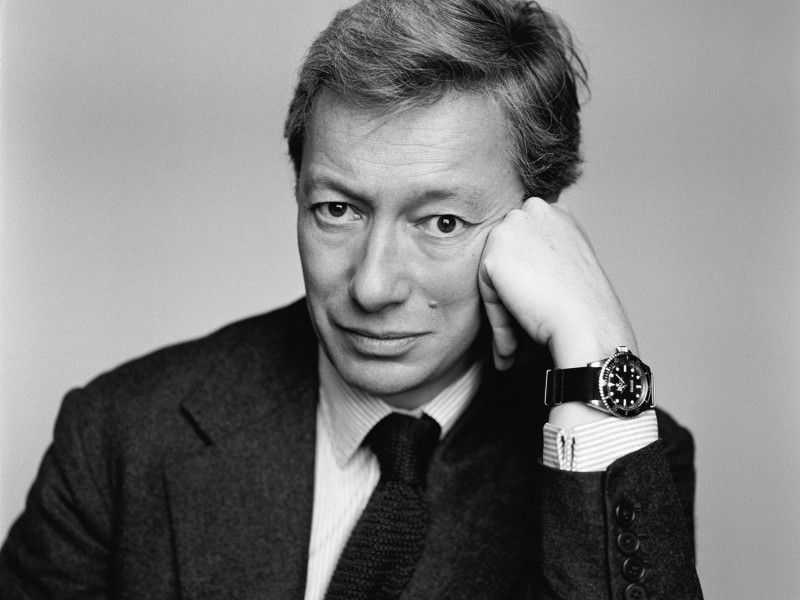The dominance of black in the compositions of particular artists has a history of critical controversy and emotional resonance. From Caravaggio’s darkly symbolic chiaroscuro, to Goya’s nightmarish cartoons, to the Impressionists’ much publicised (since disputed) elimination of the shade, black is rife with symbolism. An achromatic colour, black absorbs light. It is perhaps this capacity for deadening that has carried with it myriad associations with melancholy, haunting and obliteration. That it should, conversely, be perceived as an instrument of possibility, variety, even optimism is a radical notion, one which sets the work of French painter Pierre Soulages apart from that of many other artists preoccupied with notions of darkness.
Known as ‘the painter of black’, Soulages first began to eschew chromatic colour in the 1970s. The artist attributes his interest in black to its status “both as a colour and a non-colour”. “When light is reflected on black,” he writes, “it transforms and transmutes it. It opens a mental field all its own.” Yet his interest in the colour differs from that of many of his avant-garde friends and forbears. Neither a metaphor for the void (à la Malevich) nor a signifier of mortality (à la Motherwell), Soulages attributes his preference for the colour (or non-colour) to its capacity to produce and manipulate light. Striations within the thickly applied black paint reflect light, transforming the dark, impasto surface into an active producer of luminosity.
Soulages’ particular version of black was arrived at serendipitously, and has, over the years, undergone many processes of refinement. For the past 30 years, he has worked predominantly in outrenoir a term he invented to denote black that is more than black: black that opens rather than closes fields of visual possibility and perception. Black had always been a significant presence within his paintings, employed as an element of contrast with other colors. His earlier compositions, many created with wood stain rather than paint, featured thick, calligraphic strokes against paler backgrounds. He recalls one day in 1979 when, during a particularly intense painting session, without premeditation or intent “everything became black ... I thought it was bad,” he explains, “but I continued working on it for two or three hours ... Eventually I went to sleep, and a few hours later I looked at what I had done … I was no longer working in black but working with the light reflected by the surface of the black. The light was dynamised by the strokes of paint. It was another world.”1
While painting has always been Soulages’ primary medium, his use of paint has become increasingly three-dimensional, even sculptural, lending an element of hybridity to his practice. This emphasis upon texture and relief is integral to the artist’s manipulation of light, allowing it to strike the paint at different angles, and with different degrees of intensity depending upon the reflectiveness of the surface. His tools reflect this: traditional paint brushes are replaced by chisels, rakes, combs and scrapers. Paint is thickened or thinned into undulating relief. Furrows are carved and dragged into it. Many of Soulages’ implements have an industrial or even surgical appearance, and the majority seem to fall outside a traditional painter’s toolkit.
That the artist should maintain such an interest in the materiality of paint, its tactile qualities and potential for three-dimensional manipulation is perhaps partly attributable to a lifelong interest in craftsmanship. Soulages was born in Rodez, Aveyron, in 1919. The street in which his childhood home was located was renowned for its artisans of all descriptions: tailors, cobblers, watchmakers, binders, cabinet makers, printers and saddlers were all amongst the family’s neighbours. Before embarking on his artistic career, Soulages worked as a designer of stage sets, a role within which he simultaneously drew upon his interest in craftsmanship, and also began to develop the powerful, stripped back style and palette that was subsequently to dominate his painting. It would seem a logical assumption that this early association with the stage might have left some residue of theatricality upon Soulages’ painting, yet this is far from the case. In his artistic career, Soulages has never been a storyteller. One might presume, for example, that for an artist who came of age during the Second World War, the shadows of historical violence and trauma would be visible within his painting; however, Soulages has abjured direct references to the great conflicts of his age. His is not an art that retells events, and while he draws upon numerous historical influences, none are evoked literally.
Yet curiously, for a painter whose career has been so consistently embedded in abstraction, some of Soulages’ most profound early influences were figurative. As a teenager, he was fascinated by prehistoric art, particularly the 3,000-year-old monoliths which decorate the landscape of his native Aveyron region. In the years that followed, he discovered reproductions of the cave paintings at Lascaux, Altamira and Chauvet, where figures of animals, rendered in charcoal and dating back thousands of years, emerge out of the darkness. This sense of prehistoric peoples, working in the dark to produce dark subjects, was profoundly influential upon the young artist, who saw within this overwhelming blackness the possibility of profound and varied expression.
It is a common instinct of critics and audiences alike to seek out traces of autobiography in artists’ work. In the case of abstract art, this process is admittedly more complex, and viewers often turn to the symbolic associations of colour or the dynamism of a work’s gestural qualities to find glimpses of the artistic psyche. Soulages’ monochromatic painting, with its architectural, even industrial forms, is, upon first appearance, lacking in much of the bravura upon which personality readings depend. Yet, while the elimination of a traditional palette produces an undeniable air of uniformity, the capacity of Soulages’ outrenoir to produce varied emotions is a recurrent focus within his practice.
Soulages has described the process of making art as one of shock or crisis. His own process is at once meticulous and violent. While not characterised by the hyperactive spontaneity of many of his abstract expressionist contemporaries, his technique is nonetheless marked by physicality and strength. There is a decisiveness, both to the marks he leaves upon the canvas, and to the process by which he edits his oeuvre. Compositions that the artist perceives as unsuccessful are burned, sometimes in quantity, at the bottom of the garden. There is little time, or indeed, space, for sentiment in the work of an artist whose career spans more than 70 years, and there is something pleasingly cathartic in so irreversible an action.
Crisis is also something that art elicits in its audience, and Soulages has received many accounts of viewers weeping in front of his paintings. There exists in his work a sense of openness—even of blankness—that allows spectators to map their own emotional landscapes onto the canvas. A feature of his painting is the absence of traditional titles to accompany it, a gesture which seems in part about allowing the audience interpretive freedom. Provided only with the dates and dimensions of the painting, the process of establishing the work’s subject, (or perhaps, indeed, its lack of subject) rests solely with the viewer.
Many of his paintings are scaled approximately to human size, which lends a particular immediacy and dynamism. In Peinture 202x159 cm, 19 Octobre 2013, the canvas is marked by thirteen irregular, horizontal channels across the surface. Depending on where one stands in relation to the painting and the direction of the light, the uneven surface and the incised grooves within it progress from matte to highly reflective. As the light is reflected by particular furrows, they seem to dematerialise. Because movement is central to the process of viewing art, the art itself seems physically to transform before one’s eyes. The appearance of the painting is then determined by the viewer as well as by the artist. It is an object of constant transformation, subject not only to the perceptions, but also to the physical position of its spectators.
Related Features
-
71
-
-
-

